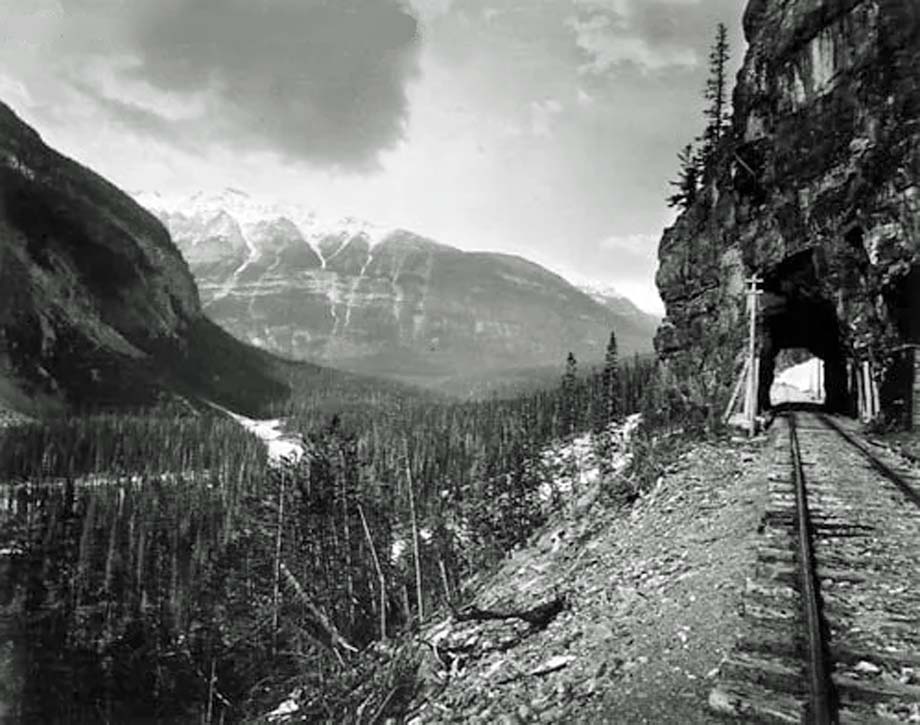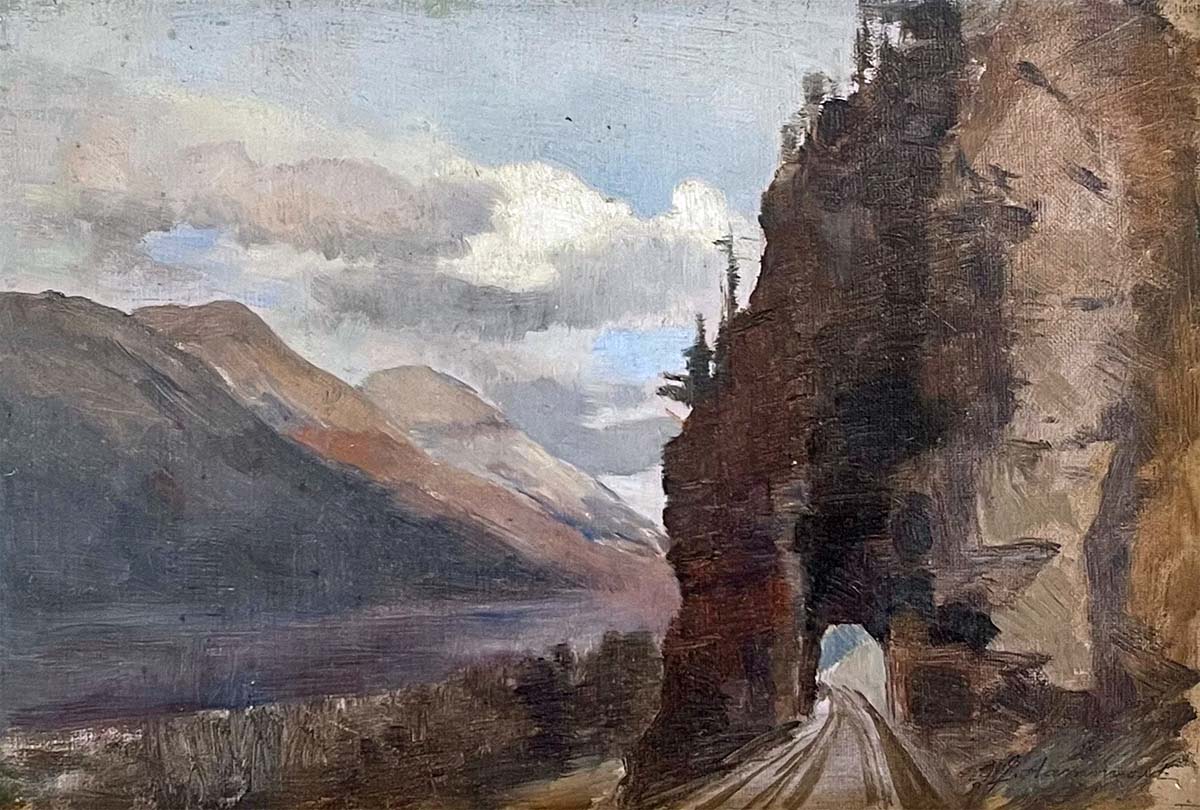Sir William Van Horne, remembered by John Hammond.
"I used to do quite a lot of my painting for the C.P.R. in their board room.
And one day Sir William Van Horne asked me to paint a picture of a bridge before it was built.
I said I would do it if the chief engineer would rough in the perspective for me.
After the picture was finished, I showed it to Sir William, and he said that if I didn't mind he would like to retouch some of the rock formations.
He was quite a geologist, by the way.
While he was working on it, Sir Thomas Shaughnessy came into the room, and seeing Sir William working on the picture, "Hammond", he said, "who's painting this picture?"
"I don't know who's painting it, Sir Thomas," I replied, "but I know who's going to be paid for it."
"I can hear Sir William's laugh to this day."
-----
"Sir William Van Horne was one of Canada's finest men, and today the Van Horne collection is still the finest in Canada.
Sir William painted very well himself, and I will always remember his clever pen and ink sketches.
He loved all the Arts but music."
John Hammond - "Glimpses from a Storied Life", pages 8-10.
-----
"John Hammond came back to Canada with his new skills not long after the C.P.R. had just been completed.
He was soon commissioned by Sir William Van Horne to paint the railway and the country that it had opened up to the traveller.
Many of John Hammond's paintings of the Rockies passed into the collection of the C.P.R.
Sir William gave others to his friends.
Seventeen of Hammond's pictures of the Rockies (owned by the C.P.R.) were exhibited at the World's Fair in Chicago in 1893.
And Hammond was later commissioned to paint a series of murals (using scenes of the Rockies and the Pacific coast) for the C.P.R.'s London offices at Charing Cross."
Edgar Andrew Collard - Historic Painting Exhibited by V.O.N., The Gazette, Montreal, 3 November 1962, page 6.

Mount Stephen's Nose Tunnel, part of the Canadian Pacific Railway's Big Hill track.
The Big Hill was notoriously the most dangerous and difficult part of the main line to descend.
Near the foot of the Big Hill this is the transition point between 4.5 percent grade to the east and an acceptable 2.2 percent grade from here down to to Field.
Mount Ogden lies to the left.


